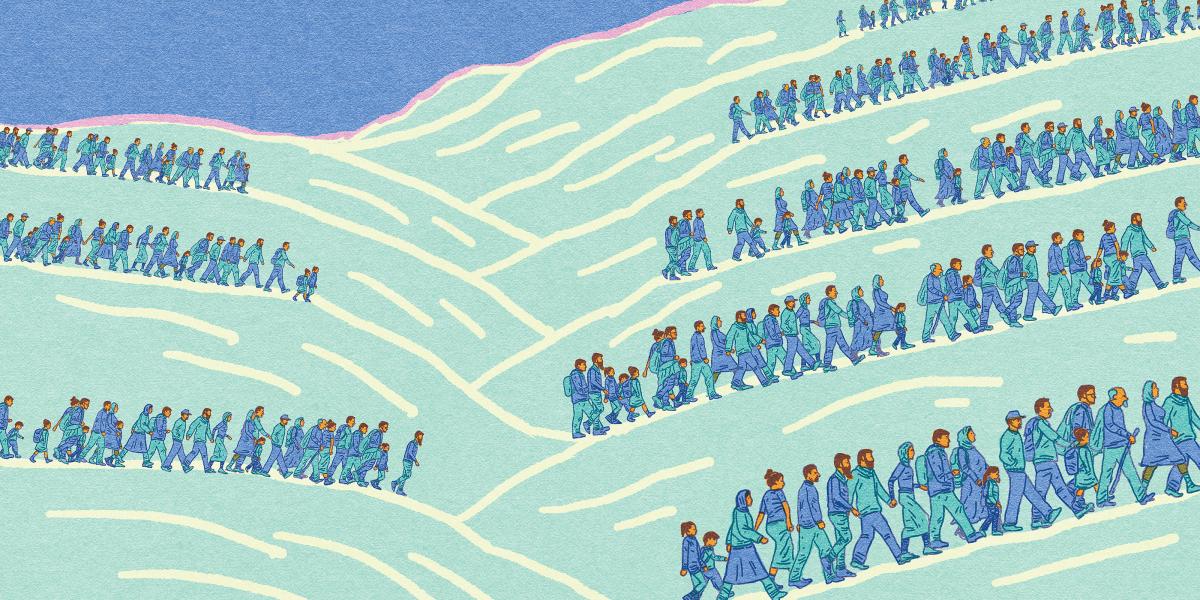Rethinking: The Displaced
The Syrian crisis has shown us the need for major reform of humanitarian response.
The Syrian regime’s unconscionable attacks on civilians and medical facilities have forged a new low in brutal repression.
The conflict also has forever changed the nature of humanitarian response.
Imagine, for a moment, a refugee crisis. Likely, you envision a crowded camp in Africa of temporary shelters and desperately poor, hungry children afflicted by malaria, cholera or other infectious disease. They live, you might assume, in tents soon to be taken down once the conflict is over and they return home.
The reality experienced by the 11 million people displaced from their homes by Syria’s civil war is very different.
There’s nothing temporary about the Syrian conflict. It has already lasted more than five years and shows no signs of ending. The majority of displaced Syrians live in cities, not camps. (The same is true globally: More than 50 percent of refugees worldwide do not live in camps.) And Syria is not a poor country. Rather, it is (or at least was) a middle-income country, which means it is dramatically more expensive to care for its refugees because they are older and suffer more from chronic diseases. (Refugee experts allocate roughly $20 per refugee per year for health care in sub-Saharan Africa, but it costs far more to care for Syrian refugees. Cancer treatment, kidney dialysis and complications from diabetes can be extraordinarily expensive.)
It’s time that we drastically change our approach to helping the 65 million forcibly displaced people around the world. (Imagine: One person in 113 driven from their homes!) We’ve got to adapt to the new realities. This will require flexibility and change by governments, international agencies like the UN Refugee Agency (UNHCR, which I was part of for 14 years) and WHO, as well as NGOs, donors, the private sector and others.
Here are three main recommendations for change.
First, we must integrate displaced people into their host country’s national systems. This starts with health care. Camp-based, parallel health care systems for refugees are over. Want proof? Look at Lebanon. At least 1 million Syrians have fled to Lebanon, meaning that approximately 1 in 4 people in the country is a refugee. And most of them live in cities and towns, not refugee camps or informal settlements. The only solution is to bring refugees into the national health system (a particular challenge for Lebanon, which has a large private health sector). The same goes for education and labor. Refugee children—like kids anywhere—need an education. And adults need to be able to work, which will give them income and purchasing power to help local economies and avoid a life dependent on aid. Many Syrian nurses, doctors and teachers could be employed to help their fellow displaced countrymen, if they were allowed to work.

All of this will cost money, but if done right, it can also serve Lebanon well into the future. The infrastructure needed for water, sanitation, schools and health clinics can provide a positive economic jolt for the country with lasting returns.
Second, we need to make interventions more sustainable and cost-effective. There are a lot of interventions in humanitarian relief, but there’s a lack of solid data to know how effective and efficient they are. Let me give you an example. Humanitarian budgets are set annually. So, if you face a sharp cutback, you want to know which interventions provide the greatest good for the money and are best to retain. Should you use the remaining funds for prevention and treatment of diabetes, coronary artery disease, antenatal care or a combination of the three? Right now, we don’t have the data to make an evidence-based decision.
Third, we need to invest in better and more effective coordination, big time. Currently we have two different coordination systems (one for internally displaced people and others; and another for refugees) which are too cumbersome. We need uniformity and consistency across both. Too many sectors and too many organizations get involved in the acute phase when there is a lot of money and media attention. In my view, the first step is to streamline the UN response so that the operational UN agencies like UNHCR, the World Food Program and Unicef have the main responsibilities in acute emergencies. Too many UN agencies all going for a piece of the pie is not helpful. We’ve also got to get a handle on the many small NGOs that sincerely want to help but at times may just add confusion. I’m thinking of the mom and pop organizations that flooded into Haiti after the earthquake and didn’t have the necessary experience. There needs to be an effective command and control system for responding to emergencies that allows for prioritization and clear decision making.
Many other areas deserve our attention, including developing leaders with experience in humanitarian coordination and leadership, ensuring humanitarian and development actors work together from the beginning of an emergency, and realizing the potential of cash-based interventions to transform humanitarian assistance. The Center I direct, the Johns Hopkins Center for Humanitarian Health, and others like it are committed to embracing these and other important issues that are the future of humanitarian health.
The world, and all of us individually, have failed the people of Syria. We should be ashamed. It’s our responsibility to do a better job helping them and all displaced peoples, now and in the future.
